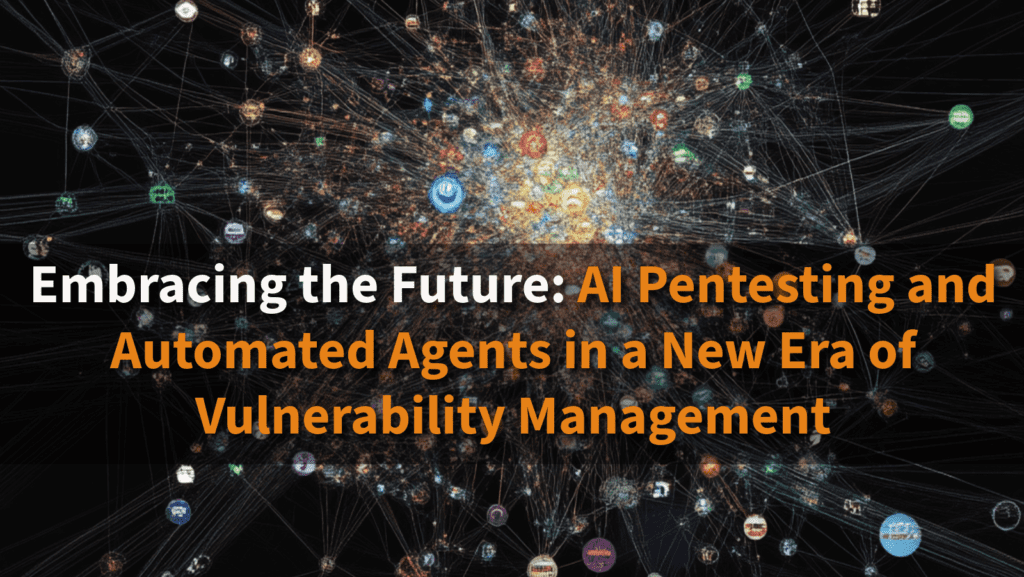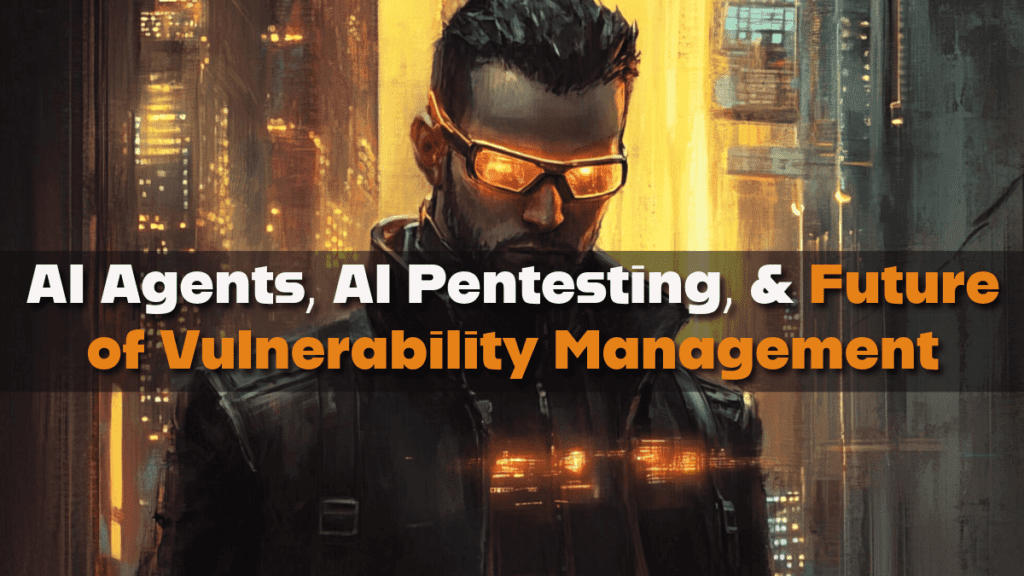Embracing the Future Beyond CVE: AI Pentesting, Automated Agents & the Future of Vulnerability Management
As the longstanding CVE framework creaks under the weight of systemic inefficiencies and an ever-growing backlog, it becomes increasingly clear that the cybersecurity community needs to reimagine its approach to vulnerability management. Building on prior critiques of the current regime, a new vision is emerging—one where AI pentesting, intelligent automation, and innovative economic models combine to forge a more responsive, effective, and self-sustaining ecosystem, the future CVE System and a clear path forward for a future of vulnerability management.

AI Pentesting: Pioneering a New Era of Active Security
Recent developments in AI-driven pentesting, exemplified by solutions such as Horizon3’s NodeZero, illustrate the potential for artificial intelligence to outpace traditional methods. Unlike manual vulnerability scanning or even static pen testing, AI systems can simulate complex, multi-layered attack scenarios faster and more thoroughly. By continuously learning and adapting to new threat landscapes, these systems offer dynamic assessments that are critical in today’s fast-evolving security environment.
Key benefits of AI Pentesting include:
Speed and Scale: AI systems can scrutinize vast codebases and networks in a fraction of the time required by human testers, reducing reaction times and mitigating risk more effectively.
Predictive Analysis: Leveraging machine learning algorithms, AI can forecast potential vulnerabilities before they are exploited in the wild. This foresight allows organizations to preemptively patch weak points.
Continuous Improvement: With each engagement, AI tools learn from emerging threats, refining their techniques in real time and offering increasingly sophisticated vulnerability insights.
These advantages underpin the argument that AI pentesting isn’t just an upgrade—it’s a necessary evolution that can render a reactive CVE backlog obsolete, creating a future CVE system that is responsive, agile and continuously improving.

AI Agents to Automate Government Bureaucracy
The cumbersome bureaucracy associated with managing thousands of CVEs is a major bottleneck in efficient vulnerability management. Here, AI agents offer a compelling solution. Unlike traditional human-driven processes, automated AI agents can ingest, enrich, and verify vulnerability data continuously. This automation could revolutionize the role of government agencies in cybersecurity by:
Streamlining Data Processing: AI agents can reduce delays in updating national databases like the NVD by instantly correlating vulnerability reports with threat intelligence.
Reducing Human Error: By standardizing the enrichment process, these systems could minimize errors that frequently occur under manual oversight.
Facilitating Real-Time Updates: With continuous learning algorithms, AI agents can update vulnerability statuses in near real-time, ensuring that all stakeholders—governments, industry providers, and end users—have access to timely and accurate information.
By automating these bureaucratic tasks, government bodies can refocus their efforts on policy-making and strategic oversight, leaving the operational heavy lifting to systems that never sleep.
Subscription Models: Private Industry and Non-Profits Filling the Void
As government-led initiatives seek to modernize the vulnerability management infrastructure, there is a significant opportunity for private industry and non-profit organizations to drive innovation via subscription-based models. This approach offers several key benefits:
Sustainable Funding: Subscription models create recurring revenue streams, ensuring that services can continuously evolve without being hamstrung by budgetary uncertainties.
Agility and Flexibility: Private and non-profit organizations can innovate faster than government institutions, rapidly integrating new technological advances and adapting to emerging cyber threats.
Diverse Ecosystem: A subscription-based model fosters competition and collaboration among multiple players, leading to a diversified ecosystem where solutions are constantly benchmarked against each other. This competitive pressure ensures that only the most effective, user-friendly, and secure tools thrive.
By tapping into market forces, the cybersecurity industry can quickly fill the void left by an outdated CVE system, ensuring that modern digital assets and infrastructure receive the proactive protection they deserve.
Other Approaches to a New Cybersecurity Paradigm
While AI pentesting and automated agents are central to the future of vulnerability management, several additional methods can complement and enhance this new paradigm:
Crowdsourced Vulnerability Intelligence:
Leveraging the collective expertise of ethical hackers and cybersecurity researchers through bug bounty programs or community-led platforms can accelerate the discovery and remediation of vulnerabilities. AI tools could help triage and validate these reports, ensuring rapid response without overwhelming manual reviewers.Blockchain-based Vulnerability Tracking:
Integrating blockchain technology could provide an immutable ledger for vulnerability data, ensuring transparency and preventing tampering. This approach not only builds trust among stakeholders but also facilitates real-time sharing of verified information across organizations globally.Hybrid Human-AI Collaboration:
While AI excels at pattern recognition and rapid data processing, human intuition remains critical for understanding complex threat vectors. A hybrid model that integrates AI-driven insights with expert human analysis can offer a more robust defense against sophisticated cyber-attacks.Decentralized Cybersecurity Platforms:
Distributed networks that pool cybersecurity resources from multiple independent entities can reduce reliance on centralized databases. These platforms might employ federated learning, where AI models learn from decentralized data sources without exposing sensitive information, promoting collaborative defense mechanisms across industries.
Reassessing What Was Missed in Initial Evaluations
While previous assessments rightly critiqued the unsustainable nature of the current CVE system, they missed several transformative opportunities:
Harnessing AI’s Full Potential:
The potential of AI goes beyond pentesting—it extends into predictive analytics, rapid vulnerability correlation, and automated incident response. Fully leveraging these capabilities could transform vulnerability management from a reactive process to a proactive, continuously adaptive system.Economic Incentives for Innovation:
Subscription models and diversified revenue streams can create a thriving market for advanced cybersecurity tools. By marrying financial incentives with technological innovation, the new paradigm can ensure that solutions evolve in sync with threat landscapes.Integration of Emerging Technologies:
Future cybersecurity initiatives can benefit from integrating blockchain, decentralized platforms, and hybrid human-AI frameworks—each offering unique advantages that complement AI pentesting and automation.
Conclusion: Charting a New Course in Cybersecurity
The challenges posed by an antiquated CVE system call for bold, innovative solutions. AI pentesting and automated agents present a clear path forward, capable of overhauling not just the methods for identifying vulnerabilities but the entire bureaucratic process behind them. Coupled with sustainable subscription models from private industry and non-profits—and enriched by complementary approaches like crowdsourcing, blockchain, and decentralized platforms—the future of cybersecurity can be transformed into one of proactive, real-time defense.
In reimagining vulnerability management through these advanced technologies, we not only address the systemic issues of today but also lay the groundwork for a resilient and agile cybersecurity ecosystem that is prepared to face the threats of tomorrow. The future is not a mere patch on an old system; it is a complete transformation, driven by innovation, collaboration, and the relentless pursuit of security excellence to establish the future of vulnerability management and a new CVE system.





